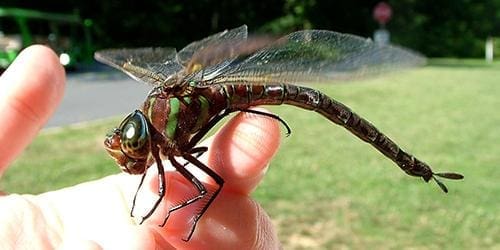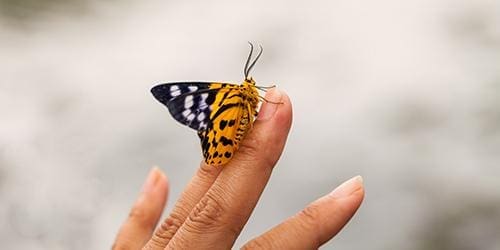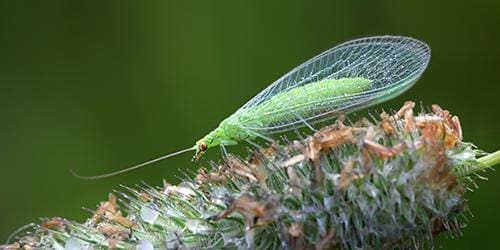Just the thought of bugs can cause some people to start squirming. But, not all bugs are the enemy, especially when it comes to gardens. There are a few, even some of the creepy ones, that are beneficial to our outside environment. From pollinating our crops, to eliminating the destructive pests, bugs can be of some very real help in maintaining a healthy garden.
Sure, there is a difference between a bug and an insect, and even arthropods. But, for the sake of this article, I will be referring to all of them as bugs, just to keep it simple.
Not all regions will necessarily have all of the bugs on this list. Even if they are found in your particular region, you might not ever spot them on the ground, in the air, or on your plants. They want to cohabitate with us humans probably less than we are wanting to with them. So, they will do their best to go unnoticed.
But, which bugs are helpful and deserve to be left alone to do their job helping with our gardens? The following list consists of some of the more popular.
- Praying Mantis

Perhaps the largest on this list, making it one that would be more noticeable, is the praying mantis. With its large and triangular head, prolonged body, and bulging eyes, these are more identifiable than some of the others on this list. The body conceals their wings, and the long forelegs are great for catching their prey.
And, their prey just happens to be various destructive bugs to our gardens.
- Spider

Admittedly, I have come a long way since the days of throwing a shoe from across the room to kill a spider. I still don’t like them, nor want to get close to them. But, I don’t fear them like I used to in the past.
Part of that is because I know they are good for killing other bugs that are detrimental to our plants and gardens. The web they weave help to trap the bugs they like to eat, which are enemies to the crops. Sure, some spiders can be harmful to us humans. But, the spiders typically found in gardens are harmless to us, and helpful to our produce.
- Ladybug

Known by other names, such as Lady Beetle and Lady Bird, the ladybug is a natural consumer of mites, aphids, and the eggs of other soft-bodied bugs. They are not only cute, but they are also helpful in maintaining a healthy garden.
In fact, some gardeners have been known to purchase them in bulk just to add them to their garden.
- Ground Beetle

Ground beetles can fly, but they seldom do.
They come out at night and go for bugs that attach to and feed off your garden treasures. You can often find them under old leaves and debri piles, or other darkly covered areas, such as a compost pile.
Even though they look like they could hurt you with their menacing appearance, they won’t. It’s best to leave them to do their work in the garden.
- Dragonfly

Next time you see a dragonfly, know they are helping with flying pests, such as mosquitoes, moths, flies, fruit flies, white flies, and even their larvae.
They might seem intimidating, but they are not.
Well, unless you are a mosquito.
- Butterfly

Chances are you wouldn’t even think of a butterfly as something you don’t want around. And, that’s a good thing.
Their mesmerizing appearance as they can be seen fluttering through the gardens, are more beneficial than simply their beauty.
They feed on the nectar of flowers, carrying pollen to help fertilize newer seeds and plants, while encouraging plant growth.
- Braconid Wasp

Wasp, hornets, and other stinging pests that fly around can make many people quite nervous. I know, because I’m one of them. However, I recently learned that the braconid wasp is harmful to the hornworm.
Yes, the same hornworm that loves to attack tomato plants. The braconid wasp lays its eggs on the worm, just under the skin. When the eggs hatch, the larvae has a feast on the hornworm, then spins a cocoon on the hornworm which suffocates it, saving your tomatoes.
- Bee

In addition to the rich honey some of us enjoy, bees also play an important role in a plant’s life cycle and growth.
Known as one of the top pollinators, they get a bad rap due to other stinging pests. Normally, they will not bother you at all, unless they feel you are attacking them. So, don’t. Let them do their job in peace.
- Lacewing

Lacewings can be a very helpful bug, as they are the biggest attacker of whiteflies and bad aphids, in both their larvae and adult stages.
The female lacewing will lay her eggs within the whiteflies and aphid larvae. They then begin to devour them, quite aggressively.
However, ants are aphid-friendly and will try to eat lacewings eggs. In other words, ants are not friendly to your garden.
- Aphid Midge

The aphid midge is the tiniest of the fly species. But, they throw quite a punch in helping control about 60 various aphid species by devouring them. In fact, they will rid your garden of destructive aphids faster than both the lacewing and ladybug.
Introducing the bugs listed above is a great way to manage the destructive bug population that wants to take over your garden. At the very least, if you find them wandering around among your plants, it’s best to leave them alone.
You may also like:
The One Tree That Every Homesteader Should Plant
The Natural Painkiller that Grows in Your Backyard (Video)
7 Mistakes To Avoid When Harvesting Rain Water
18 Plants That Should Never Be Planted Together
Urbanites Moving To Rural Paradise Ruining It For The Locals










Hi! In the picture on the left, above your article, there are little red bugs with black legs. What are they? I see them every year and having no luck in finding information on them.
I believe those are spider mites.
Aphids is what they appear to be. They feed ladybugs which are wonderful for your garden.